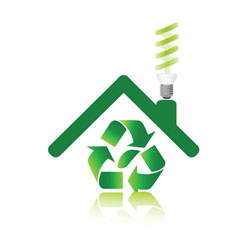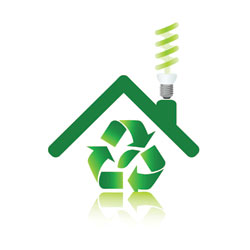By Allen Griffin, GMB, CGR, CGP, CAPS
The curbside appeal of your home contributes much to its perceived value, but what you don’t see can be equally  important and will be more important in the coming years.
important and will be more important in the coming years.
In its original version the American Clean Energy and Security Act of 2009 (h.r.2454) called for energy audits of real property. Meaning that; any home put on the market would be required to have an energy audit done and made available to the prospective buyers. This was also part of the original cap and trade bill that passed in 2009 but, it was negotiated to be made optional at the states discretion. That was in 2009 before the city of Houston ever experienced a rolling blackout or faced utility bills like we are facing now.
As a nation, we consume more energy (electricity) then we can produce. Over the past 20+ years very few power generation plants have been built. Our last nuclear plant began construction in 1977 and came online in 1986. Currently consumption exceeds production. Due to this reality it has become necessary to change how we consume energy as a whole.
Coming down the road are changes to the national building codes which will include mandated energy requirements. They are scheduled to be implemented by 2015 and with them there will be harsh financial burdens if states do not adopt and enforce them.
Homeownership is often referred to as a financial investment. Now it is more critical than ever to make smart financial decision based on the future value of your home and future regulations.The Austin City Council passed an ordinance in 2008 requiring an energy audit and disclosure of said audit to any potential buyers of homes 10 year old or older. Other cities across the nation have taken similar actions. With this information in mind, it is becoming clear what the future will look like. Decisions about home improvements or energy upgrades today need to have future regulations in mind.
Making changes to an older home without the help of a professional that understands building science and the complete system can have devastating effects on its health and efficiency. A house is a system; all elements are connected and work together. You save money and improve performance when you take cost-effective measures that reduce building loads, and then install systems and appliances that are the right size to meet the reduced loads. In general, over-sizing worsens performance and increases costs. The most effective strategy for improving household energy efficiency is to first target your home’s envelope—walls, attic, windows, and doors. Then improve the energy efficiency of systems, such as heating, cooling, lighting, and appliances.
There are resources available for the “do it yourself” type person to get a basic understanding of a home’s needs. Energy Star’s Home Energy Yardstick is a good as well as educational tool as to how your home performs today. However, for your investment in the future, it is best to consult a professional that understands the interactions of building science. Look for a third-party energy consultant that works for you and provides no products or systems for the best unbiased results.
Allen W. Griffin, GMB, CGR, CGP, CAPS. is the president of Gryphon Builders, builder of the nation’s first GREEN Remodel and the newly formed Gryphon Property Services, a company designed to be your Property Maintenance Partner. Using his 23+ years of building experience, his goal is to provide a new outlook on handling property maintenance and related services.



